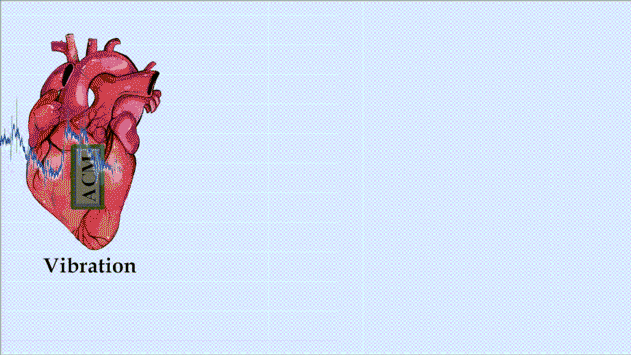Valvular heart diseases (VHD), defined as reduced or backward flow of blood through heart valves, affect 2.5% of the US population and incurred a cost of $42.47 billion on the healthcare system in 2019. Initial evaluation of patients suspected with valve diseases is performed using the auscultation practice by a stethoscope at the primary care physician’s office. In the case that suspicious heart murmurs are detected, the patient is referred to a cardiologist for a transthoracic echocardiogram test. However, it has been demonstrated that auscultation suffers from a low sensitivity of 44% for murmur detection, resulting in numerous missed cases.
This study develops a novel framework for wearable and accurate identification of coexisting valvular heart diseases at point of care. A highly-sensitive accelerometer contact microphone captures irregular vibrations on the chest wall, which represent valvular heart diseases. Inspired by the human auditory system, the recordings are initially transformed into Mel-frequency cepstral coefficients and their first and second derivatives, resulting in 3-channel images. An image-to-sequence translation network based on the convolution-meets-transformer (CMT) architecture is then applied to each image to find local and global dependencies, and predict a 5-digit binary sequence, where each digit corresponds to the presence of a specific type of VHD.
The performance of the proposed framework is evaluated on 58 VHD patients and 52 healthy individuals using a 10-fold leave-subject-out cross-validation (10-LSOCV) approach. Statistical analyses suggest average sensitivity, specificity, accuracy, positive predictive value, and F1 score of 93.28%, 98.07%, 96.87%, 92.97%, and 92.4% respectively, for the detection of coexisting VHDs. Furthermore, areas under the curve (AUC) of 0.99 and 0.98 are reported for the validation and test sets, respectively. The high performances achieved prove that local and global features of accelerometer contact microphone recordings effectively characterize heart murmurs associated with valvular abnormalities.

